Courthouses of Lowell
Tomorrow is the groundbreaking for the new Lowell Judicial Center. This seven-story, 250,000 square foot building is expected to cost more than $200 million and take 30 months to build. It will contain 17 courtrooms, the registry of deeds, and other offices related to the judiciary. Governor Charlie Baker will preside over the ceremony which will begin at 2 pm at the construction site which is at the end of Jackson Street, just beside the Lord Overpass. I plan to attend and will write about the groundbreaking ceremony afterwards.
The judicial center will consolidate all of the existing courts in Lowell (and will bring in a few more from other parts of the county). Here is a review of the courthouse, current and past, of Lowell
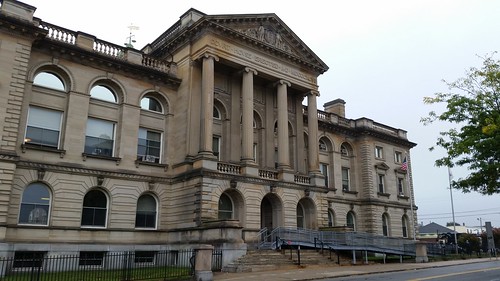
Lowell Superior Courthouse
Superior Courthouse
The superior courthouse on Gorham Street was built in 1849 at a cost of $38,000. The land had been acquired by Middlesex County from James Dana of Charlestown, and Thomas Nesmith and Andrew Wheelock of Lowell, for $11,032. In 1855, the Middlesex North Registry of Deeds was established and located in the superior courthouse. On October 30, 1860, the county conveyed 16,439 square feet of this parcel to the Trustees of Donations to the Protestant Episcopal Church (this became St. John’s church). Beginning in 1894, the original superior court building was moved 60 feet backwards and a second building was constructed in its place along Gorham Street. This new building was dedicated in September 1898.
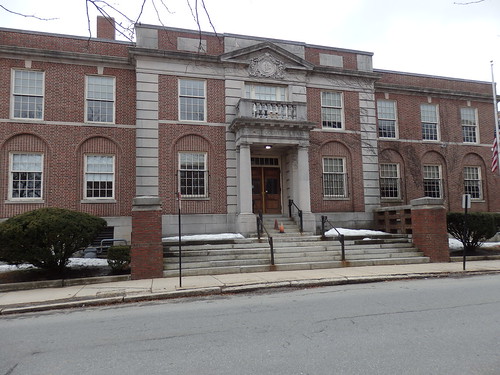
Lowell District Court
Lowell District Court
On May 9, 1924, the legislature passed “An Act to provide accommodations for the District Court of Lowell.” Middlesex County acquired two parcels on Hurd St, one from Kirkor Sahagian, the other from Katie Welch. (in 1945, the County acquired several other lots along Williams St which now are the parking lot of the district court). On August 11, 1967, the legislature passed “An Act authorizing the County Commissioners of Middlesex County to borrow money for planning, constructing, equipping and furnishing an addition to and for the alteration of the District Court of Lowell.” The county took by eminent domain several parcels on Hurd and Williams Street (this would be the current Clerk’s Office and 4th session of the District Court.
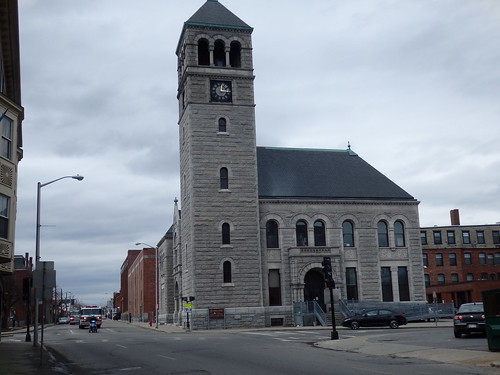
Lowell Juvenile Court
Juvenile Court
The building that now houses the Lowell Juvenile Court was constructed in 1893 as the Lowell Post Office. This parcel, at the corner of Appleton and Gorham Street, was the first location of St. Peter’s Church from the 1840s until the early 1890s when a new church was built further up Gorham St, across from the Superior Court (that church was demolished in 1997). In 1933, the post office relocated to East Merrimack Street and the Federal Building, now owned by Middlesex Community College. This building was then used as the headquarters of the Lowell School Department until the 1990s when it was acquired by private owners who now rent it to the Commonwealth for use as the Juvenile Court.
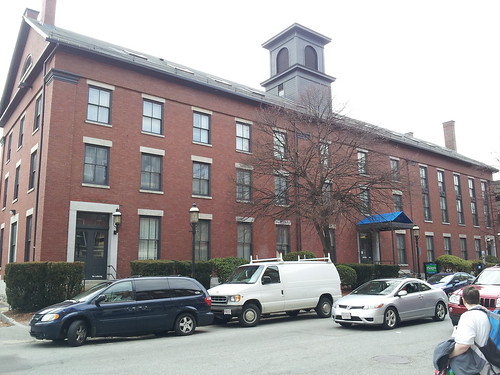
Lowell Police Court, aka City Market Building
Lowell Police Court
On March 2, 1833, the Massachusetts State Legislature passed “An Act to establish a Police Court in the town of Lowell.” The court opened on the second floor of the City Market building on Market Street. Constructed originally by the city as a market building with space on the first floor for farmers to sell their produce with city offices on the upper floors until taken over by the Police Court, this building later housed the Lowell Police Department until the construction of the JFK Civic Center in the early 1970s.
County Jail (Part One)
On April 2, 1837, the Proprietors of Locks and Canals conveyed a parcel on the north side of Dutton Street (319 feet west of the intersection with Fletcher) to Middlesex County for use as a county jail. In 1845, several other lots were added to this parcel. In 1871, Middlesex County sold this “old jail lot” to Sylvester Richardson of Lowell and Nathaniel Peabody of Dracut.
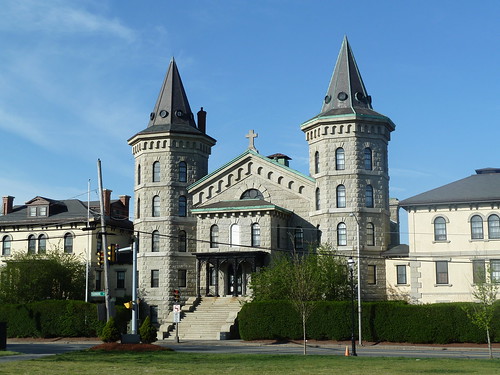
Middlesex County Jail
County Jail (Part Two)
The jail on Thorndike Street was built in 1852-53 on a lot purchased in 1847 from Ransom Reed. The jail was designed by James H. Rand, contained 102 cells, and cost $150,000. The jail closed in 1919. In 1924, the County sold the jail to the Roman Catholic Archbishop of Boston for $63,000. The jail became Keith Academy, an all-boys high school.
An interesting side story regarding the Superior Court on Gorham Street is that the original 1850 structure to the rear was designed by Amni Young who was also the architect of the Custom House in Boston (the lower section, not the later tower). After completing the Lowell courthouse, he was appointed Superintending Architect of the United States Treasury Department where he went on to design over 50 public buildings throughout the country during his ten year tenure.